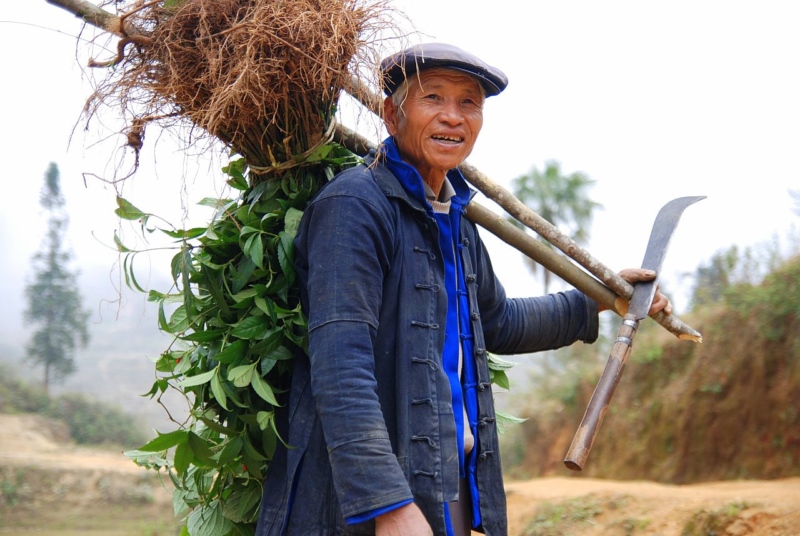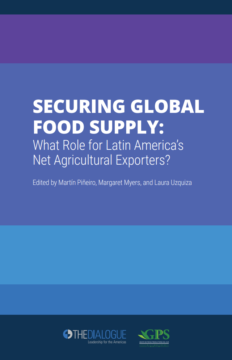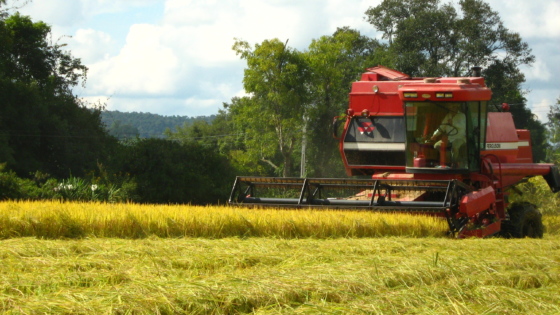Earthquake Exposes Haiti’s Silent Crisis
Haiti represents one of the most complex and deeply rooted challenges facing U.S. foreign policy in the Western Hemisphere: a failing state on the doorstep of the world’s most powerful nation.
As has been the case since the Mao era, self-sufficiency in staple foods is a primary objective of the Communist Party.
The country's National Medium-Term Priority Framework in 2013 promotes 95 percent self-sufficiency in grain (corn, wheat and rice, specifically) in the coming decade. But the limiting effects of urbanization, pollution and climate change on arable land, as well as concerns about food price volatility, are leading officials and firms to look overseas for agricultural investment opportunities. This is especially true in the case of soy, which is not included in the self-sufficiency planning. The result is a "two markets, two resources" approach to food security, wherein the country works to improve domestic production capacity in staple foods while seeking to control production, processing and logistics for commodities, like soy, that cannot be supplied domestically in sufficient quantities.
In Latin America, China's food-related engagement is still focused predominantly on trade, especially in soy, and to a lesser extent in other grains, fruits and certain luxury food items (coffee and wine, for example). Imports of soy are driven by demand for edible oils (albeit of the non-GMO variety) and feed, and are expected to reach nearly 90 million tons by 2030. Corresponding growth in agricultural trade with Latin America is anticipated in the coming years. An increase to US$ 40 billion by 2017 was proposed by former premier Wen Jiabao during the meeting with UN Economic Commission for Latin America and Caribbean in 2013.
Although trade is booming, China's agricultural investment in Latin America is relatively limited (especially in comparison to investments in other sectors), and far less focused on "land grab" activity than the media tends to suggest.
Dozens of Chinese land grabs have been documented in Latin America, but after extensive research, the Inter-American Dialogue can only confirm 10, most of which involve the purchase of exceedingly small quantities of land.
As indicated in the literature on Chinese overseas agricultural investment, the first Chinese land purchases in Latin America took place in Cuba and Mexico in 1996 and 1998, respectively. These early investments in the region were a form of foreign assistance. Specifically, they were intended to improve rice cultivation practices.
In the 2000s, private, provincially managed and state-owned firms have sought out increasingly market-based investment opportunities, including joint ventures and other cooperation contracts. Land purchases also increased slightly in the 2000s. In 2005, private firm Pengxin Group purchased land in Santa Cruz, Bolivia, for a soybean production zone, for example. Zhenjiang Fudi and Chongqing Grain Group are associated with land purchase deals in Brazil. And Great Wall wine producer, COFCO, purchased 350 hectares of Chilean land in 2010.
Chinese firms are also increasingly investing in various phases of production in order to expand capacity, reduce costs and diversify risk. Firms like Noble Group (China Investment Corp. is a 16 percent shareholder), Chongqing Grain Group, Sanhe Hopefull and China National Heavy Machinery Corp. have invested in factories, pressing plants, mills and other agriculture-related infrastructure in Latin America. Even firms in non-agricultural industries like telecommunications are participating in the broader financialization of commodity trade and agricultural production.
But agricultural investment on the part of China's public and private firms still pales in comparison to that of other major multinationals, which established themselves in the region over the course of decades. The "two markets, two resources" strategy pits China's private and public firms against the likes of Bunge, Cargill, Dreyfus and ADM in their pursuit of greater vertical integration in food supply chains. In some cases, they have been unable to compete effectively with these agricultural giants. Chinese investors are further limited in certain cases by new legislation and negative public reaction to proposed investments.
Despite relatively limited investment activity thus far, China is increasingly promoting the internationalization of its agricultural firms (COFCO and Beidahuang, in particular) by means of policy direction, tax incentives/breaks, subsidies, credit, low-interest loans and/or high-level diplomatic support. The 2006 Outward Investment Sector Direction Policy and 2006 Catalogue of Industries for Guiding Outward Investment promote agricultural investment in: 1) planting of natural rubber; 2) planting of oil-seeds, cotton and vegetables; 3) harvesting, transportation and cultivation of timber; 4) animal husbandry; and 4) ocean fisheries.
In 2010, Minister of Agriculture Han Changfu said, "The time is ripe for the county's agricultural companies to embark on a go outward strategy." A special fund was created by Ministry of Commerce that year to support overseas investment in agriculture, forestry and fisheries. Interest among central government officials and firms in actual land purchases is waning, however, especially given the propensity for popular backlash in Latin America to Chinese land acquisition activity.
The government is also seeking to deepen agricultural cooperation with Latin America by means of high-level dialogues, bilateral agreements and free-trade agreements. The first-ever China-LAC Agricultural Ministers Forum took place in June and established a joint 500,000 ton food reserve and a US$ 50 million fund for eight research and development centers in the region (one will evidently be in Uruguay). China has also signed bilateral agriculture, fishing and forestry-related agreements, and other cooperation agreements with Latin America and Caribbean countries. A Joint Action Plan between China and Brazil encourages two-way investment in agriculture with a focus on agricultural investments in grain and food processing, for example.
While China is committed to increasing domestic agricultural output (and there is much that can be done in this regard), the country's need to complement internal production with foreign agricultural goods is becoming more urgent. This has obvious implications for Latin America, especially in terms of soy imports and related investment.
As was evident over the past decade, even relatively small changes in China's consumption patterns can have a major influence on global agricultural commodities market. Latin America should expect growing interest from China in agriculture, and in specific foods in particular. China is inclined to project its food deficits abroad. The extent to which its investments and other agreements are successful will continue depend, however, on popular, foreign government and interest group reactions to enhanced Chinese agricultural engagement.
Haiti represents one of the most complex and deeply rooted challenges facing U.S. foreign policy in the Western Hemisphere: a failing state on the doorstep of the world’s most powerful nation.
How role can Latin America play in addressing global food security challenges?
The China-Latin America agro-industrial relationship has been growing, and at a notable pace, prompted in large part by China’s evolving food security strategy
 Takeaway/CC BY-SA 3.0.
Takeaway/CC BY-SA 3.0.

